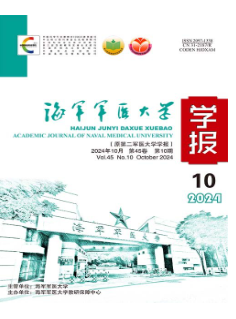Effect of silk fibroin on degradation and in vivo biocompatibility of poly (L-lactic-co-ε-caprolactone) electronspun nanofibrous scaffolds
Q4 Medicine
引用次数: 0
Abstract
Objective To investigate the effect of silk fibroin(SF) on degradation and biocompatibility of poly(L-lactic acidco-e-caprolactone)(P[LLA-CL]) in vivo.Methods The scaffolds of P(LLA-CL)(w / w = 1 ∶ 1) blended with 25% of SF(SF / P[LLA-CL]) and P(LLA-CL) were prepared by electrospinning.Both kinds of scaffolds were subcutaneously implanted in 45 6-monthold rats for up to 6 months to evaluate their degradation and biocompatibility characteristics.Results Pathological sections showed P(LLA-CL) scaffold become swollen and began to separate into different layers after 3 months,and then become broken after 6 months;while SF / P(LLA-CL) scaffold largely maintained its structure after 6 months.Immunohistochemical staining showed a large number of macrophages on the surface and in P(LLA-CL) scaffolds 1 month after implantation,and they could still be found 3 months after implantation,accompanied by foreign body giant cells; while no obvious macrophages or foreign body giant cells were found in SF / P(LLA-CL) scaffolds at different time points.Examination of inflammatory gene expression showed that TNF-α and IL-10 expression in P(LLA-CL) scaffolds was significantly higher than that in SF / P(LLA-CL) scaffolds 1 week after implantation(P 0.05),the same was also true for TNF-α,IL-1β and IL-10 expression 1 month after implantation(P 0.05),for TNF-α and IL-10 expression 2 months after implantation(P 0.05),for TGF-β expression 3 months after implantation(P 0.05),and for IL-1β and TGF-β expression 6months after implantation(P 0.05).Conclusion SF incorporation can delay degradation,reduce inflammation,and improve the biocompatibility of P(LLA-CL) scaffolds,which may provide reference for scaffold design in tissue engineering.丝素对聚l -乳酸-co-ε-己内酯电子纺纳米纤维支架降解及体内生物相容性的影响
目的研究丝素(SF)对聚l -乳酸-e-己内酯(P[la - cl])体内降解及生物相容性的影响。方法采用静电纺丝法制备25% SF(SF / P[la - cl])和P(la - cl)共混的P(la - cl)(w / w = 1∶1)支架。将两种支架分别植入45只6月龄大鼠皮下长达6个月,评估其降解和生物相容性特性。结果病理切片显示,P(LLA-CL)支架在3个月后肿胀并开始分层分离,6个月后断裂;而SF / P(LLA-CL)支架在6个月后基本保持其结构。免疫组化染色显示P(LLA-CL)支架在植入1个月后表面及内可见大量巨噬细胞,植入3个月后仍可发现巨噬细胞,并伴有异物巨细胞;SF / P(la - cl)支架在不同时间点均未见明显巨噬细胞和异物巨细胞。炎性基因表达检测显示,P(la - cl)支架1周后TNF-α、IL-10表达显著高于SF / P(la - cl)支架(P 0.05), 1个月后TNF-α、IL-1β、IL-10表达显著高于SF / P(la - cl)支架(P 0.05), 2个月后TNF-α、IL-10表达显著高于SF / P(la - cl)支架(P 0.05), 3个月后TGF-β表达显著高于TNF-α、IL-10表达(P 0.05), 6个月后IL-1β、TGF-β表达显著高于SF / P(la - cl)支架(P 0.05)。结论SF掺入能延缓P(LLA-CL)支架的降解、减轻炎症、提高其生物相容性,可为组织工程支架设计提供参考。
本文章由计算机程序翻译,如有差异,请以英文原文为准。
求助全文
约1分钟内获得全文
求助全文
来源期刊

海军军医大学学报
Medicine-Medicine (all)
CiteScore
0.50
自引率
0.00%
发文量
14752
期刊介绍:
Founded in 1980, Academic Journal of Second Military Medical University(AJSMMU) is sponsored by Second Military Medical University, a well-known medical university in China. AJSMMU is a peer-reviewed biomedical journal,published in Chinese with English abstracts.The journal aims to showcase outstanding research articles from all areas of biology and medicine,including basic medicine(such as biochemistry, microbiology, molecular biology, genetics, etc.),clinical medicine,public health and epidemiology, military medicine,pharmacology and Traditional Chinese Medicine),to publish significant case report, and to provide both perspectives on personal experiences in medicine and reviews of the current state of biology and medicine.
 求助内容:
求助内容: 应助结果提醒方式:
应助结果提醒方式:


